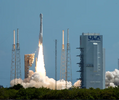- Oct 1, 2014
- 5,475
- 11,563
- AFL Club
- Hawthorn
My daughter is studying in Tasmania and unknown to me, she saw the Aurora and snapped a few pictures, which she has just sent to me. Poor quality but it looks pretty spectacular.It’s looking to be a bit of a fizzer tonight according to the Glendale aurora app. Still things can change but it seems the next cme that has arrived is glancing earth so is not as strong.














